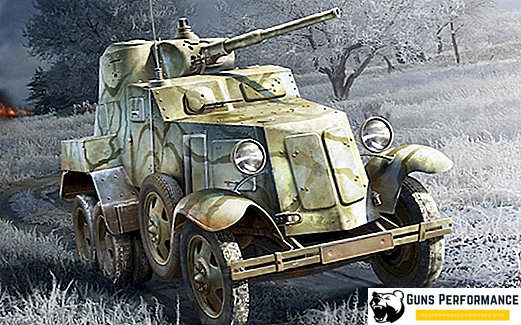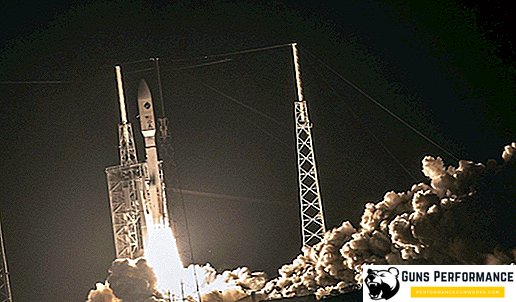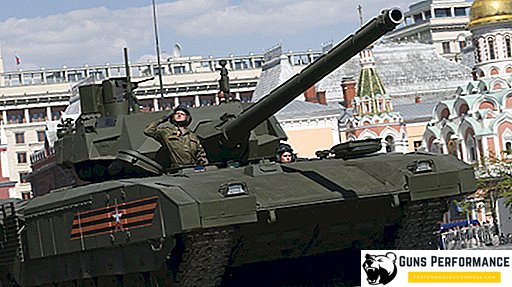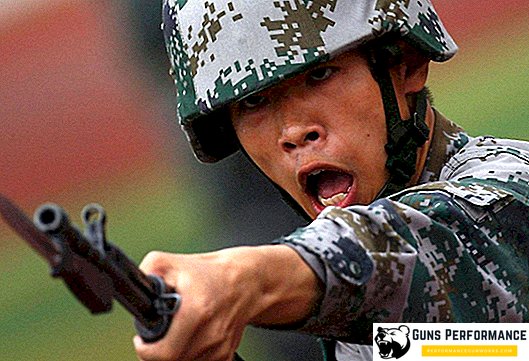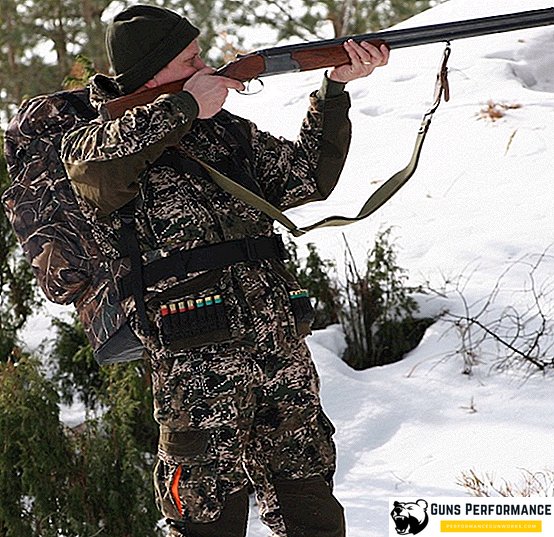The second half of the last century was a real high point for helicopters. Especially actively used these machines for military purposes. For the first time, helicopters were massively used during the Korean War and showed their highest efficiency. At first they were used for reconnaissance, adjusting artillery fire, transporting the wounded. Thanks to their emergency evacuation from the battlefield, the number of the dead in the American army has dramatically decreased.

The first helicopters were imperfect: they had low speed, low payload, poor protection from enemy fire. But their progress was rapid. Very soon, these machines have mastered the shock and transport functions, almost every year more and more sophisticated machines appeared.
The USSR joined this race not immediately. But when the Soviet military estimated the merits of a new class of aircraft, several design bureaus were created at once, which were engaged in the development of rotary-wing aircraft. At the same time, Soviet designers sought to make them faster, more powerful and more foreign counterparts. And often they did it. Soviet helicopters were considered among the best in the world, they were delivered to dozens of countries around the world, some of the cars are truly unique. A striking example of this, of course, is the Mi-26 - the largest transport helicopter in the world.

The history of the Mi-26
Mi-26 began to develop in the Mil Design Bureau in the early 70s of the last century. The new cargo helicopter was supposed to deliver heavy loads to sparsely populated areas of the Soviet Union. It was created as a replacement for the model created in the same design bureau - the cargo Mi-6. Initially, the Mi-26 helicopter did not plan to be used for military purposes. A new car was needed to deliver goods weighing 10-15 tons over a distance of 500-800 kilometers.
Designers set a goal to make the most of the proven components and assemblies used on the Mi-8, Mi-12 and Mi-6 and already commercially available. Several schemes of the future machine were considered: single-screw, twin-screw, longitudinal and transverse. Studies conducted in conjunction with specialists from TsAGI and CIAM showed the advantages of the classic single-rotor scheme. According to the technical specifications developed for the new machine, the Mi-26 was supposed to carry cargo weighing up to 20 tons at a distance of at least 400 kilometers. Engines for the new heavy helicopter were developed at the Zaporozhye plant Progress.

The creators of the Mi-26 paid great attention to the design of the rotor. The new machine was equipped with a screw with metal blades with a diameter of 28 meters. This solution significantly improved the technical characteristics of the helicopter, increased its thrust and reduced its overall weight. Particularly successful was the fuselage of the new machine: while maintaining the required mass of the fuselage, it was possible to increase the rigidity of the structure and increase the useful volume of the cargo compartment several times.
When creating a new heavy helicopter, the operating experience of previous models was taken into account. Dust protection devices were installed in front of the air intakes, which significantly increased engine life. Convenient access to all components and assemblies was thought out, which made repair and maintenance of the Mi-26 as convenient as possible. Cargo cabin equipped with loading equipment (electric winch, hoist). The machine can carry loads on the external sling (up to 20 tons).
Initially, the car was laid the possibility of transporting personnel. 82 paratroopers with weapons or 60 wounded on stretchers could fit in the cargo cabin. For several hours, the Mi-26 helicopter could be converted into an ambulance.
The construction of the prototype began in 1972, the first flight of the machine made in 1977. In 1980, the Mi-26 successfully passed state tests, receiving a high rating from the State Commission and the pilots who conducted them. It was recommended to launch a new car into the series and put it into service.
In 1983, military tests of the new machine began, and in 1985 it began to enter the army.

The public was shown this car in 1981, at the international exhibition in Le Bourget. She made a real sensation.
The helicopter was actively used in the Afghan war. It was the Mi-26 that first evacuated the damaged Mi-8 helicopter. Mi-26 helicopters operated in Afghanistan from air bases in the territory of neighboring Tajikistan and carried out tasks for the Soviet grouping: transportation of cargo and personnel, evacuation of the wounded. Already after the start of the invasion of the multinational coalition in Afghanistan, the Mi-26 evacuated two damaged CH-47 Chinook helicopters (USAF) and AS-532 Kuguar helicopters (Holland Air Force) on the external suspension.
Mi-26 was actively used during the liquidation of the consequences of the Chernobyl disaster since 1986. This machine participated in the conflict in Nagorno-Karabakh, in the first and second Chechen campaigns, in several conflicts on the territory of the African continent.
Several cars were shot down. The largest helicopter crash in the history of world aviation is connected with the Mi-26. In 2002, not far from Khankala, the Mi-26 was shot down by Chechen separatists with the help of Igla. In this terrible tragedy 127 people died.

The helicopter is perfect for solving problems of both military and peaceful nature. It can be used for rescue operations, transportation of oversized cargo on external sling. This helicopter is also used to extinguish forest fires.
Today, these machines are in service with several dozen countries. Most of all Mi-26 in the Russian Air Force. These helicopters are actively used by the Russian Emergencies Ministry. The machine has several dozen modifications, its production continues at the helicopter plant in Rostov. Until 2011, 316 units were produced, 40 cars were sent to other countries.
Mi-26 is currently the largest mass-produced transport helicopter in the world. He set several world records for payload, altitude and range. The machine has excellent technical characteristics, pilots and service personnel love it. Due to their unique characteristics, these helicopters are very popular both in Russia and abroad.

Device
The Mi-26 helicopter is built according to the classical scheme. It has one steering and one rotor. The bearing screw has eight blades, the steering screw - five. Blades of the screw have a steel spar, a plastic frame and a special filler. To improve the aerodynamic properties of the blades have a variable profile. The design of the sleeve used titanium.
The power plant consists of two gas turbine engines D-136 (each with a capacity of 11,400 hp), which have no analogues in the world.
Chassis tricycle, non-retractable.
Fuselage - all-metal half-gun. In its nose is the radar antenna and cockpit. Behind it is the passenger cabin. The cargo compartment occupies most of the fuselage. Its dimensions are very impressive: the length is 12 meters, width - 8.25 meters. It has loading equipment.
The design of the helicopter is actively used a special aluminum alloy, which is about 25% lighter than ordinary aluminum. Fuel tanks are built into the design of the car, the volume of tanks is 11600 liters, which allows the Mi-26 to overcome up to 800 kilometers.

The fuselage has excellent aerodynamic characteristics, numerous fairings are installed on the helicopter.
The complex of electronic and navigation equipment allows the machine to perform its tasks during the day or at night, in different weather conditions. The upgraded Mi-26T2 helicopter received a newer BREO-26 complex and a more comfortable cockpit with liquid crystal screens, as well as a new navigation system that can navigate and plot a course using the GLONASS navigation system.
The crew of the Mi-26 consists of six people.
At present, the modification of the Mi-26T2 is ready, it can be controlled by two people.
Specifications
| Parameter | Characteristic |
| Main rotor diameter | 32 m |
| Number of main rotor blades | 8 |
| Area swept by rotor | 804.25 m² |
| Tail rotor diameter | 7.61 m |
| Length | 40.025 m |
| Fuselage length | 33.727 m |
| The height of the rotor | 8.145 m |
| Chassis base | 8,950 m |
| Wheel track | 5,000 m |
| Mass of empty | 28,200 kg |
| Normal takeoff weight | 49 500 kg |
| Takeoff weight | 56,000 kg |
| Load capacity in the cargo compartment | 20 t |
| Load capacity on the external sling | 20 t |
| Cargo Cabin Length | 12.0 m |
| Cargo Cabin Width | 3.2 m |
| Cargo cabin height | 3.1 m |
| Cargo hatch dimensions | 2.9 x 3.2 m |
| Cargo Cabin | 110 m3 |
| Crew Mi-26 | 6 |
| Crew of Mi-26T2 | 2 people (3 people with external load suspension) |
| Passenger Capacity (Soldier) | 85 |
| Capacity of passengers (paratroopers) | 70 |
| Passenger capacity (stretcher for the wounded) | 60 + three health workers |
| Fuel tank capacity | 12 000 l |
| Volume of outboard fuel tanks (PTB) | 14,800 l in four PTB or 4780 l in two PTB |
| Power point | 2 × turboshaft "Motor Sich" D-136 |
| Engine power | 2 × 11,400 l. with. |
| Jet fuel consumption | 3100 kg / h |
| Max speed | 295 km / h |
| Cruising speed | 265 km / h |
| Flight range at maximum refueling | 800 km |
| Flight range at maximum load | 475 km |
| Flight range during the stretch | 2350 km (with four PTB) |
| Practical ceiling | 4600 m |
| Static ceiling | 1800 m |
| Dynamic ceiling | 6500 m |


